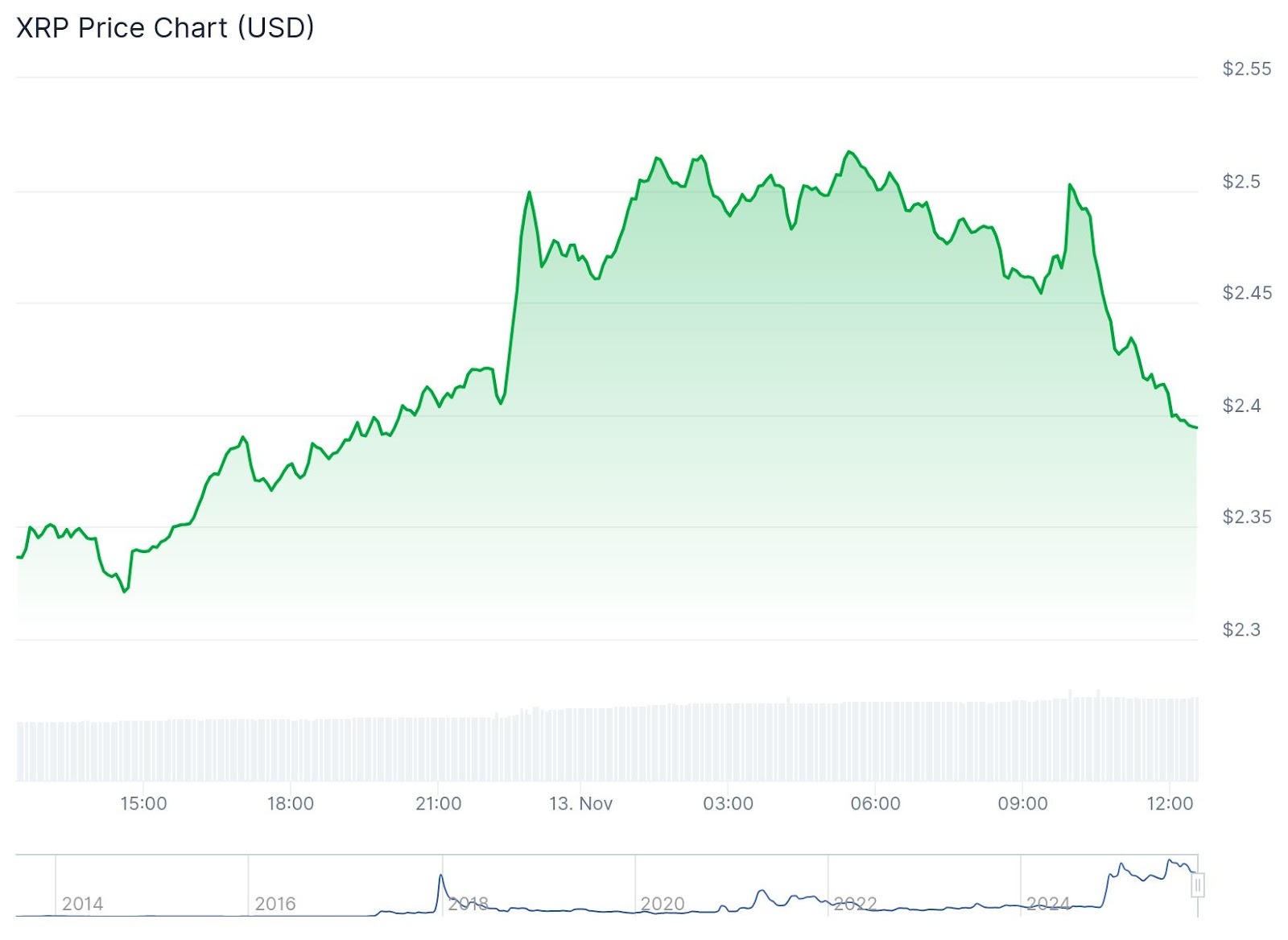The next phase of crypto ETFs has arrived: XRP now has a U.S.-listed spot fund. Canary Capitals XRPC launched on the Nasdaq, a milestone that puts Ripples network back in the institutional conversation after years of regulatory turbulence.
What just happened
Canary Capitals spot XRP ETF began trading under the ticker XRPC on Nasdaq. The U.S. Securities and Exchange Commission cleared the path earlier this week via approval of the funds Form 8-A filing. BNY Mellon is the funds custodian, while Nasdaq manages daily trading and market operations.
Market reaction: fast move, quick cool-off
Traders didnt wait. XRP jumped about 5% to $2.50 around the debut before easing to $2.42, still roughly 3% higher on the day. The pop extends a week-long run of nearly 10% as the listing approached, suggesting a classic buy-the-rumor setup that hasnt fully unwound.

On the fund side, activity was lively out of the gate: roughly $42 million in volume crossed in the first 30 minutes. As price discovery settled in, XRPC shares traded at $25.60, down 3.9% from the $26.60 opena reminder that ETF shares and the underlying token can trace different intraday paths even when exposure is spot-based.
Why this matters
This listing broadens the ETF on-ramp beyond Bitcoin and Ethereum into a payments-focused network with a global base of users and institutions. For advisors and funds that can only access crypto via 40-Act or exchange-listed vehicles, XRPC unlocks a new sleeve of exposure and could influence multi-asset crypto allocations, index construction, and risk budgeting.
It also represents a reputational turn for Ripple. After a multi-year legal cloud, the optics of a U.S. exchange-traded spot product supported by blue-chip infrastructure (BNY Mellon custody, Nasdaq trading) may shift how risk committees view XRP-specific exposure.
Inside the product
- Structure: spot exposure to XRP via an exchange-traded fund, listed on Nasdaq.
- Infrastructure: BNY Mellon as custodian; Nasdaq handles trading operations.
- Regulatory footing: enabled by the SECs approval of the funds Form 8-A.
Investors will watch for spreads, tracking quality versus spot XRP markets, and the durability of volume once the launch halo fades.
Ripples legal arc and a shifting posture at the SEC
The XRP narrative has long been defined by the SECs enforcement action over whether XRP constituted a security. That dispute, which stretched roughly five years, was resolved earlier this year when both sides dropped appeals. Market observers took the outcome as a sign the agency may lean more on rules and registrations than on case-by-case enforcementthough U.S. crypto policy remains far from settled.
The ETF wave: where XRP fits
- Bitcoin: Spot BTC ETFs arrived in January 2024 and now hold about $135.8 billion in net assets, roughly 6.67% of Bitcoins market capitalization.
- Ethereum: ETH ETFs followed in July 2024, accumulating about $22.14 billion, near 5.42% of Ethereums market cap.
- Solana: U.S.-based Solana products joined on Oct. 28 with Bitwises Solana Staking ETF (BSOL) and the Grayscale Solana Trust (GSOL).
XRPs addition underscores how investor demand and regulatory frameworks are gradually expanding beyond the largest two networks. Each successive listing builds operational musclefrom custody to market-makingthat can translate into tighter spreads and deeper liquidity across the sector.
Market implications and what to watch
- Flows vs. volume: Early turnover is encouraging, but sustained net inflows are the real tell for institutional adoption.
- Tracking and spreads: Premium/discount dynamics will reveal how efficiently the fund arbitrages to spot XRP.
- Risk transfer: With BNY Mellon in the loop, more conservative allocators may reconsider XRP exposure in balanced crypto sleeves.
- Regulatory drift: Any formal SEC guidance on non-BTC/ETH digital asset securities analysis would recalibrate product design and distribution.
Bottom line
XRPCs launch delivers a credibility bump for XRP and adds another building block to the U.S. crypto ETF stack. The near-term trade looks like classic launch-day churn; the longer-term story will be written by flows, spreads, and whether policy keeps trending from courtroom to rulebook.
